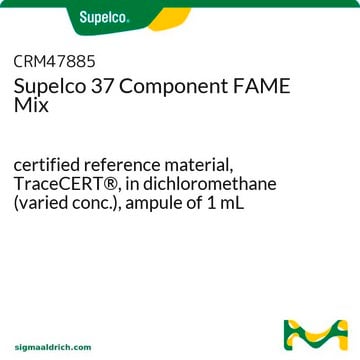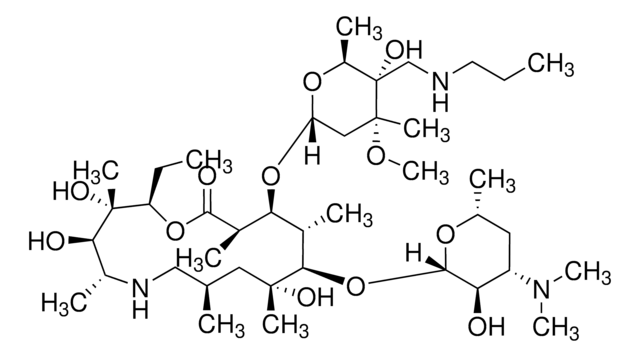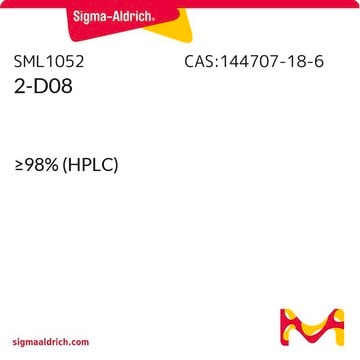75741
Ginkgolic acid C15:1
analytical standard
Sinónimos:
6-[(8Z)-Pentadecenyl]-salicylic acid, Ginkgolic acid I
Seleccione un Tamaño
Seleccione un Tamaño
About This Item
Productos recomendados
grado
analytical standard
Nivel de calidad
Ensayo
≥80% (HPLC)
caducidad
limited shelf life, expiry date on the label
técnicas
HPLC: suitable
gas chromatography (GC): suitable
aplicaciones
food and beverages
Formato
neat
temp. de almacenamiento
2-8°C
cadena SMILES
CCCCCC\C=C/CCCCCCCc1cccc(O)c1C(O)=O
InChI
1S/C22H34O3/c1-2-3-4-5-6-7-8-9-10-11-12-13-14-16-19-17-15-18-20(23)21(19)22(24)25/h7-8,15,17-18,23H,2-6,9-14,16H2,1H3,(H,24,25)/b8-7-
Clave InChI
YXHVCZZLWZYHSA-FPLPWBNLSA-N
¿Está buscando productos similares? Visita Guía de comparación de productos
Descripción general
Aplicación
Ginkgolic acid C15:1 may be used as an analytical reference standard for the quantification of the analyte in Ginkgo biloba plant extracts, and dietary supplements using chromatography techniques.[2][3]
Palabra de señalización
Warning
Frases de peligro
Consejos de prudencia
Clasificaciones de peligro
Aquatic Chronic 4 - Skin Sens. 1
Código de clase de almacenamiento
11 - Combustible Solids
Clase de riesgo para el agua (WGK)
WGK 3
Punto de inflamabilidad (°F)
509.9 °F - (calculated)
Punto de inflamabilidad (°C)
265.5 °C - (calculated)
Equipo de protección personal
dust mask type N95 (US), Eyeshields, Gloves
Elija entre una de las versiones más recientes:
¿Ya tiene este producto?
Encuentre la documentación para los productos que ha comprado recientemente en la Biblioteca de documentos.
Los clientes también vieron
Active Filters
Nuestro equipo de científicos tiene experiencia en todas las áreas de investigación: Ciencias de la vida, Ciencia de los materiales, Síntesis química, Cromatografía, Analítica y muchas otras.
Póngase en contacto con el Servicio técnico









